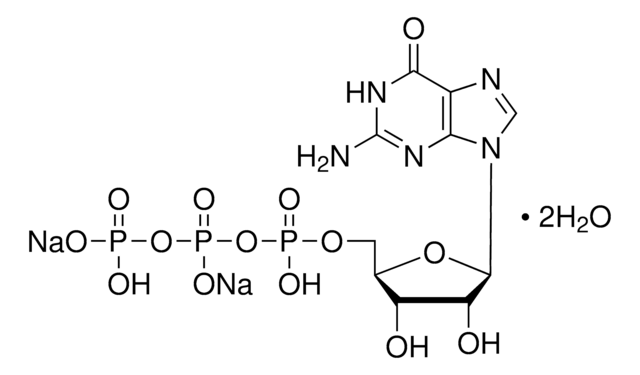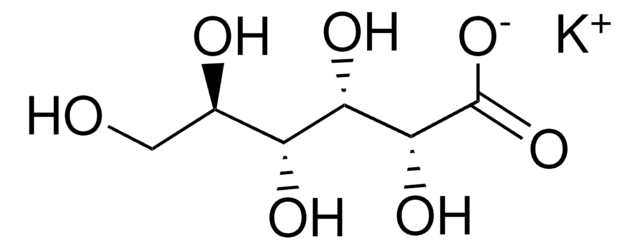A9187
Adenosine 5′-triphosphate magnesium salt
≥95%, bacterial
Synonym(s):
ATP, ATP magnesium salt
About This Item
Recommended Products
biological source
bacterial
Quality Level
Assay
≥95%
form
powder
solubility
H2O: 50 mg/mL
storage temp.
−20°C
SMILES string
[Mg].Nc1ncnc2n(cnc12)C3OC(COP(O)(=O)OP(O)(=O)OP(O)(O)=O)C(O)C3O
InChI
1S/C10H16N5O13P3.Mg.2H/c11-8-5-9(13-2-12-8)15(3-14-5)10-7(17)6(16)4(26-10)1-25-30(21,22)28-31(23,24)27-29(18,19)20;;;/h2-4,6-7,10,16-17H,1H2,(H,21,22)(H,23,24)(H2,11,12,13)(H2,18,19,20);;;
InChI key
CPGAIACWYFBIFN-UHFFFAOYSA-N
Looking for similar products? Visit Product Comparison Guide
Application
- as a supplement in intracellular medium for Ca2+ retention assay and fluorescence wide field imaging analysis
- as a component in potassium methane sulfonate-based internal solution for in vitro electrophysiology of cortical neurons
- as a component in action potential intracellular solution
Biochem/physiol Actions
Signal Word
Warning
Hazard Statements
Precautionary Statements
Hazard Classifications
STOT SE 2
Target Organs
Eyes,Central nervous system
Storage Class Code
11 - Combustible Solids
WGK
WGK 3
Flash Point(F)
Not applicable
Flash Point(C)
Not applicable
Certificates of Analysis (COA)
Search for Certificates of Analysis (COA) by entering the products Lot/Batch Number. Lot and Batch Numbers can be found on a product’s label following the words ‘Lot’ or ‘Batch’.
Already Own This Product?
Find documentation for the products that you have recently purchased in the Document Library.
Customers Also Viewed
Our team of scientists has experience in all areas of research including Life Science, Material Science, Chemical Synthesis, Chromatography, Analytical and many others.
Contact Technical Service










